
Albany is the capital city of the U.S. state of New York and the seat of Albany County. It is located on the west bank of the Hudson River, about 10 miles (16 km) south of its confluence with the Mohawk River, and about 135 miles (220 km) north of New York City.

Guilderland is a town in Albany County, New York, United States. In the 2020 census, the town had a population of 36,848. The town is named for the Gelderland province in the Netherlands. The town of Guilderland is on the central-northwest border of the county. It is just west of Albany, the capital of the U.S. state of New York.

Westmere is a hamlet in the town of Guilderland, Albany County, New York, United States. Since the 1970 Census, a census-designated place (CDP) has been established with the name of Westmere for tabulating the population of what the census has defined as the boundaries for Westmere. The population was 7,284 at the 2010 census. It is a suburb of the neighboring city of Albany. U.S. Route 20 bisects the community and is the major thoroughfare and main street. Along Western Avenue are numerous strip malls, shopping plazas, and commercial buildings, with residential use on the side streets to the north and south. Crossgates Mall, the Capital District's largest shopping mall, is in Westmere's northeastern corner.
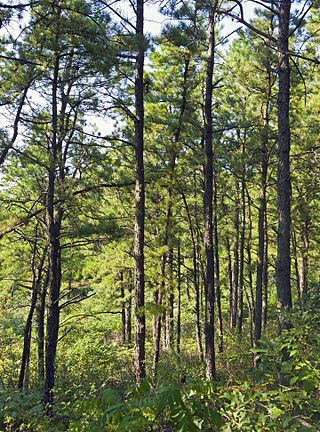
The Albany Pine Bush, referred to locally as the Pine Bush, is one of the largest of the 20 inland pine barrens in the world. It is centrally located in New York's Capital District within Albany and Schenectady counties, between the cities of Albany and Schenectady. The Albany Pine Bush was formed thousands of years ago, following the drainage of Glacial Lake Albany.
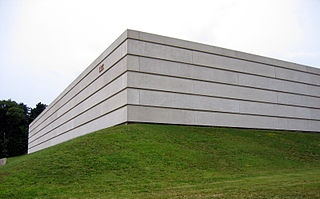
The Broadview Center, formerly known as the SEFCU Arena, is a 4,538-seat multi-purpose arena in Guilderland, New York. It is home to the University at Albany men's and women's Great Danes basketball teams. It is most notable for hosting the 2006 America East Conference men's basketball tournament championship, in which the Great Danes defeated Vermont, to earn their first bid into the NCAA Men's Division I Basketball Championship. The arena additionally hosted the 2009 America East men's basketball tournament, and is also a venue for the university's graduate commencement ceremonies. It can also can be formatted as a concert venue or to accommodate trade shows and conventions.
Crossgates Mall is an enclosed, automobile-oriented, super-regional shopping mall located in the Albany, New York suburb of Guilderland. It is the largest indoor shopping center in the Capital District, and the third largest in the State of New York. The mall featutes the traditional retailers Macy's, JCPenney, Dick's Sporting Goods, Primark, Burlington, Best Buy, and REI. The mall features the prominent specialty retailers Urban Outfitters, Lululemon Athletica, Zara, Dry Goods, and Offline by Aerie.
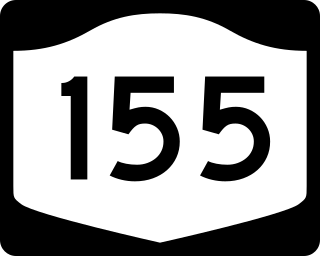
New York State Route 155 (NY 155) is a 16.85-mile-long (27.12 km) state highway located entirely within Albany County in the Capital District of New York. The western terminus of the route is at NY 85A in Voorheesville. The eastern terminus is at NY 32 in Watervliet. NY 155 mainly serves as a connection to the Albany International Airport from the major roads it connects to.
Guilderland Center is a hamlet in the town of Guilderland, Albany County, New York, United States. The hamlet lies along New York Route 146 and the Black Creek, a tributary of the Normans Kill.
Slingerlands is a hamlet in the town of Bethlehem, Albany County, New York, United States. It is located immediately west of Delmar and near the New Scotland town-line and south of the Albany city-limits, and is thus a suburb of Albany. The Slingerlands ZIP Code (12159) includes parts of the towns of New Scotland and Guilderland.

The neighborhoods of Albany, New York are listed below.
The history of Albany, New York began long before the first interaction of Europeans with the native Indian tribes, as they had long inhabited the area. The area was originally inhabited by an Algonquian Indian tribe, the Mohican, as well as the Iroquois, five nations of whom the easternmost, the Mohawk, had the closest relations with traders and settlers in Albany.
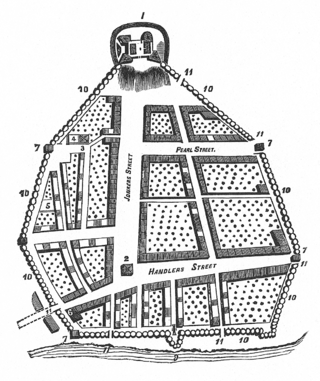
The streets of Albany, New York have had a long history going back almost 400 years. Many of the streets have changed names over the course of time, some have changed names many times. Some streets no longer exist, others have changed course. Some roads existed only on paper. The oldest streets were haphazardly laid out with no overall plan until Simeon De Witt's 1794 street grid plan. The plan had two grids, one west of Eagle Street and the old stockade, and another for the Pastures District south of the old stockade.
Guilderland is a hamlet of the town of the same name in Albany County, New York, United States.
Fullers is a hamlet in the town of Guilderland, Albany County, New York, United States. The hamlet lies along U.S. Route 20.

The Albany Convention Center (ACC) was a proposed convention center to be located in downtown Albany, New York. The complex was initially proposed by Albany Mayor Gerald Jennings in 1994. In 2004, the Albany Convention Center Authority (ACCA) was established by the New York Legislature as a New York State public-benefit corporation to develop plans for the ACC. Supported by Governor George Pataki, the project was awarded a $75 million grant in 2006. The anticipated price tag of the project was approximately $220 million, and a site between Broadway, Hudson Avenue, and the South Mall Arterial was selected. In 2008, 2009, and 2010, the ACCA acquired much of the property that made up the proposed site.
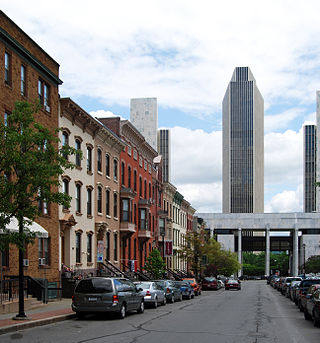
The architecture of Albany, New York, embraces a variety of architectural styles ranging from the early 18th century to the present. The city's roots date from the early 17th century and few buildings survive from that era or from the 18th and early 19th century. The completion of the Erie Canal in 1825 triggered a building boom, which continued until the Great Depression and the suburbanization of the area afterward. This accounts for much of the construction in the city's urban core along the Hudson River. Since then most construction has been largely residential, as the city spread out to its current boundaries, although there have been some large government building complexes in the modernist style, such as Empire State Plaza, which includes the Erastus Corning Tower, the tallest building in New York outside of New York City.
Pine Hills is a neighborhood in Albany, New York, generally defined as the area from Manning Boulevard to the west, Woodlawn Avenue to the south, Lake Avenue to the east, and Washington Avenue to the north. The neighborhood consists mainly of freestanding multi-unit, duplex, and semi-detached houses and is home to Albany High School, the LaSalle school, the College of St. Rose, and the Alumni Quad of the University at Albany. Though mostly residential due to historical reasons from its founding, Pine Hills is home to two neighborhood commercial districts ; Middle Madison, from Partridge to Quail streets was designated first, and then a latter designated district, Upper Madison, from Main Avenue to North Allen Street. The area of Pine Hills east of Main Avenue and north of Myrtle Avenue is commonly referred to as the student ghetto due to its predominant population of college-age students. The area of Pine Hills west of Main Avenue features many large Queen Anne, Folk Victorian, and Colonial Revival homes. Upper Madison, where it meets Western Avenue near St. Rose is the center of a commercial area, complete with a movie theater, grocery store, fast food strip mall, retail, restaurants, a library, community playhouse, police station, pharmacy, and elementary school.

The history of Albany, New York from 1860 to 1900 begins in 1860, prior to the start of the Civil War, and ends in 1900.
Washington Avenue is a major east–west route in the city of Albany, New York.














